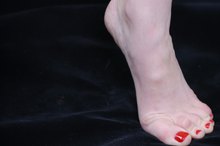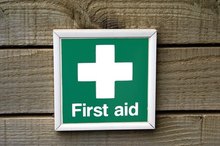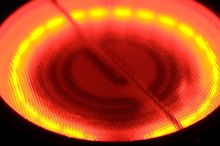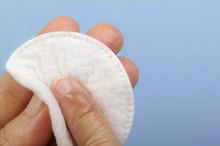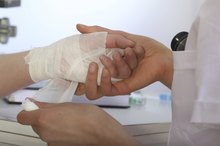What does fact checked mean?
At Healthfully, we strive to deliver objective content that is accurate and up-to-date. Our team periodically reviews articles in order to ensure content quality. The sources cited below consist of evidence from peer-reviewed journals, prominent medical organizations, academic associations, and government data.
The information contained on this site is for informational purposes only, and should not be used as a substitute for the advice of a professional health care provider. Please check with the appropriate physician regarding health questions and concerns. Although we strive to deliver accurate and up-to-date information, no guarantee to that effect is made.
How to Treat a Burn Bubble
A burn bubble, also known as a blister, most commonly appears with a second degree burn. A burn bubble is a raised pouch on top of the skin that is filled with fluid, usually clear in color. Burn bubbles occur when the skin is burned from contact with fire, heat or scalding. Properly treating a burn bubble will prevent infection and help the blister to heal quickly.
Identify the type of burn before administering treatment. First degree burns affect only the top layer of skin and usually do not produce burn bubbles 1. Second degree burns affect both the top layer of skin and the layers of skin underneath. Second degree burns do cause burn blisters. Third degree burns are a severe type of burn, affecting all layers of skin and require immediate medical attention.
How to Treat a Burn on the Top of the Foot
Learn More
Soak the burned area in cool water to reduce the heat from the burn. Rather than soaking, you can use cold compresses on the affected area. Use only cold water, not ice or ice water on a burn.
Administer an antibiotic ointment to the burn bubble. Cover the blister loosely with a piece of sterile gauze. Gauze should be larger than the entire burn area. Secure with surgical tape, taking care not to stick the tape to the blister or the burned area of skin.
How to Treat a Kitchen Burn
Learn More
Avoid popping or breaking the blister. Opening the blister increases the risk of infection. The burn bubble will shrink on it's own. If the burn bubble pops on it's own, keep the area covered to prevent exposure and infection.
Take an over-the-counter pain medication, such as aspirin or acetaminophen to relieve pain. Apply antibiotic ointment and change bandages daily. Watch for signs of infection including swelling, redness or pus. If any of these symptoms occur, consult with your physician.
Related Articles
References
- MayoClinic: Burns: First Aid
- American Academy of Dermatology Association. How to Treat a First-degree, Minor Burn.
- Cleveland Clinic. Burns. Updated August 31, 2017.
- Agrawal A, Raibagkar SC, Vora HJ. Friction burns: epidemiology and prevention. Ann Burns Fire Disasters. 2008;21(1):3–6.
- Shahrokhi S, Jindal K, Jeschke MG.Three Components of Education in Burn Care: Surgical Education, Inter-professional Education, and Mentorship.Burns. 2012;38(6):783-789.doi:10.1016/j.burns.2012.01.012.
Writer Bio
Mary Ellen Popolo began writing freelance articles online in 1998. She has published numerous how-to articles specializing in home and family and many other topics.
